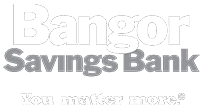
It is never too soon to start teaching your children smart financial habits that will help them throughout adulthood. Teaching your teen lessons about responsible banking can encourage saving, spending within their means, and avoiding overdrafts. The following are suggested areas to cover in a banking discussion with your teen.
Teaching Good Habits
You want your child to learn good habits as young as possible to help them enjoy financial independence and responsibility as an adult. One of the best ways to do this is teaching the importance of saving. You may want to help your teen set a savings goal, whether it is for the latest and greatest gaming system, a new bicycle, or buying their first car. An excellent habit for teens to develop early is setting money aside in their savings account. You may want to encourage them to save a certain percentage of their money, such as 10%, to help their savings grow.
A checking account can be a useful tool for money management as well, especially if your teen wants an account for daily spending. With a checking account they can develop the skills needed to monitor their balance and track their expenses, avoid a negative balance and overdraft charges, or avoid insufficient funds for a purchase. Helping your teen understand the difference between a need and a desire can protect them financially in the future.
Banking Priorities
Talk with your teen to help them determine their priorities when using banking services. Every teenager is different: some want to save for college or buy a car while others are more interested in stretching their money as far as possible.
For teens, banking priorities may include:
- Building savings
- Low or no fee checking
- Budgeting assistance
- Setting and reaching financial goals
- Developing a bank relationship to get a car loan
Things to Look for
A teenager's first bank account can help build money management skills. While you can choose a regular checking or savings account, there are also bank accounts designed specifically for teenagers and even younger children.
It is essential to check with your bank or credit union on any requirements they might have before opening an account. Some banks and credit unions require a parent as a co-signer while others limit eligibility to teenagers over a certain age. Some accounts have a minimum deposit amount required to open an account and some accounts have ongoing balance requirements (and may charge monthly fees if you do not meet them).
Other features and fees to look for include:
- Spending limits. The bank may assign a spending limit each day for a teenager's checking account, or you may be able to set limits as the parent.
- Parental restrictions. Some accounts allow you to specify whether your teenager can make deposits, withdrawals, or transfer money.
- Mobile and text banking. These features are popular with teens. Many bank account apps can also send push notifications to the teen about their balance and transactions.
- Education. You may want to choose a bank or credit union that offers educational resources for young adults.
- Fees. Look for a checking or savings account without a monthly maintenance fee or minimum balance.
Checking and savings accounts are great tools to help teach teenagers the financial habits they will need for the rest of their lives. It is never too early to teach your teen how to use banking to their advantage and how to set aside money for a rainy day.
